My Guide to a Fully Stocked Kitchen
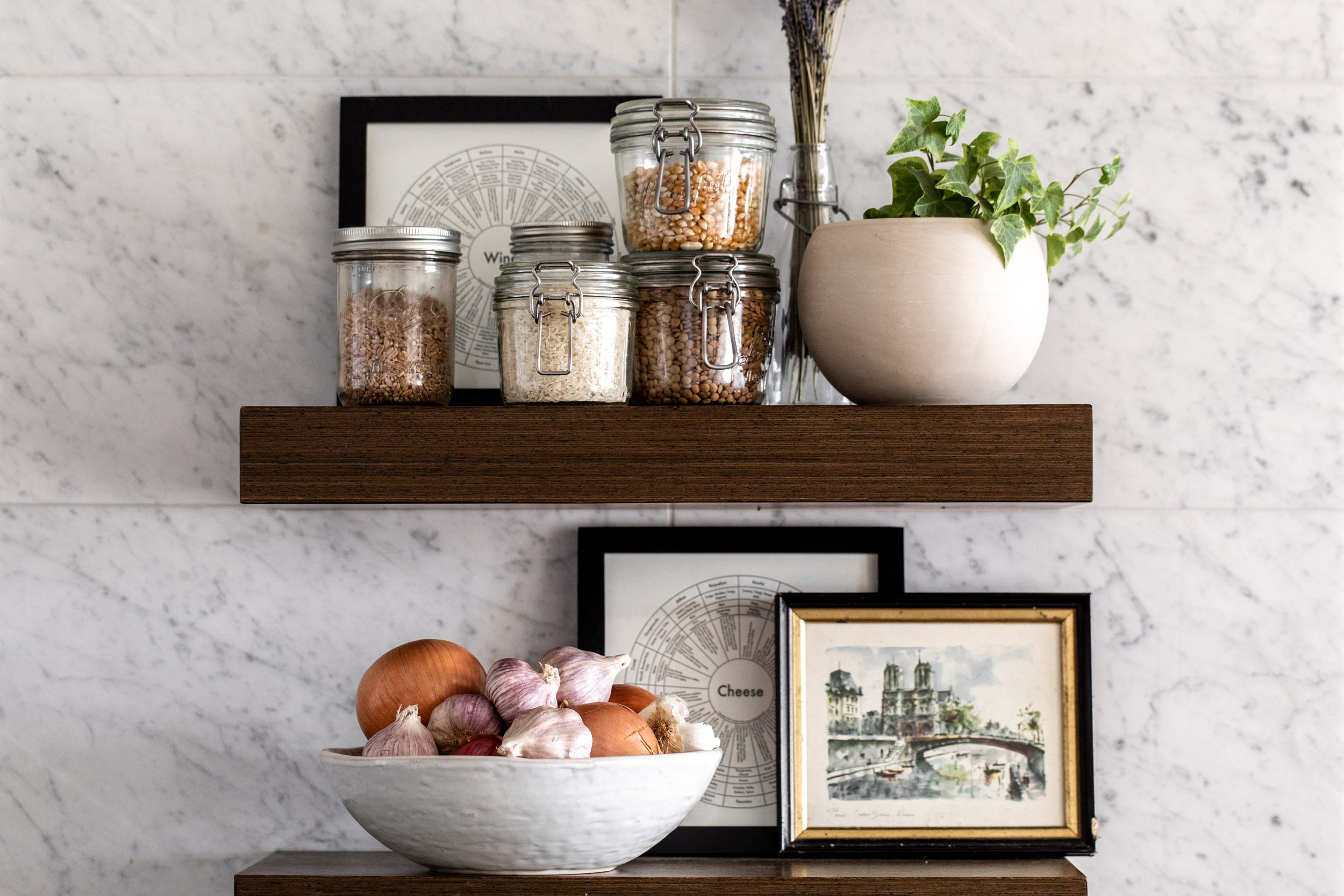
I will start this out by saying, I am not your typical person – not everyone keeps their kitchen/ pantry/ refrigerator stocked with kimchi, an assortment of chilies and spices or duck fat. While I consider these necessities, in this blog I will note the ordinary staples that I keep stocked, with the hope that others can make a meal “on the fly”. The goal is to have enough staples on hand so you don’t to have to make a trek to the grocery store and have a minor existential crisis of “what did I even come here for?” every time you want to cook a meal. Here’s My Guide to a Fully Stocked Kitchen!
My Guide to a Fully Stocked Kitchen
TABLE OF CONTENTS
Many people have grocery store anxiety. They get there and don’t know what to get or where to start. Not me, I am like a kid in a candy store. On the one hand, if I am testing a recipe where I have a rough draft of the ingredients, then I will go in with a list; otherwise I will go in ready for ingredients to inspire me. In the case of the latter, it helps knowing that I have a fully stocked kitchen at home to flesh out my meal once I buy the basics. And I find that keeping a stock of the basics also helps me avoid food waste. I buy things for one recipe but then will use them again and again for other things. This method also helps to keep weekly food budgets lower.
One of my favorite games to play with my friends is one where they give me list of ingredients available in their house and I tell them what they can make with it. It’s like my own personal version of “Chopped” done via text. This list will help to flesh out those kinds of meals.
The ingredients marked with an asterisk (*) are ones that I love but aren’t as necessary if you are looking to pair it down.
Here we go:
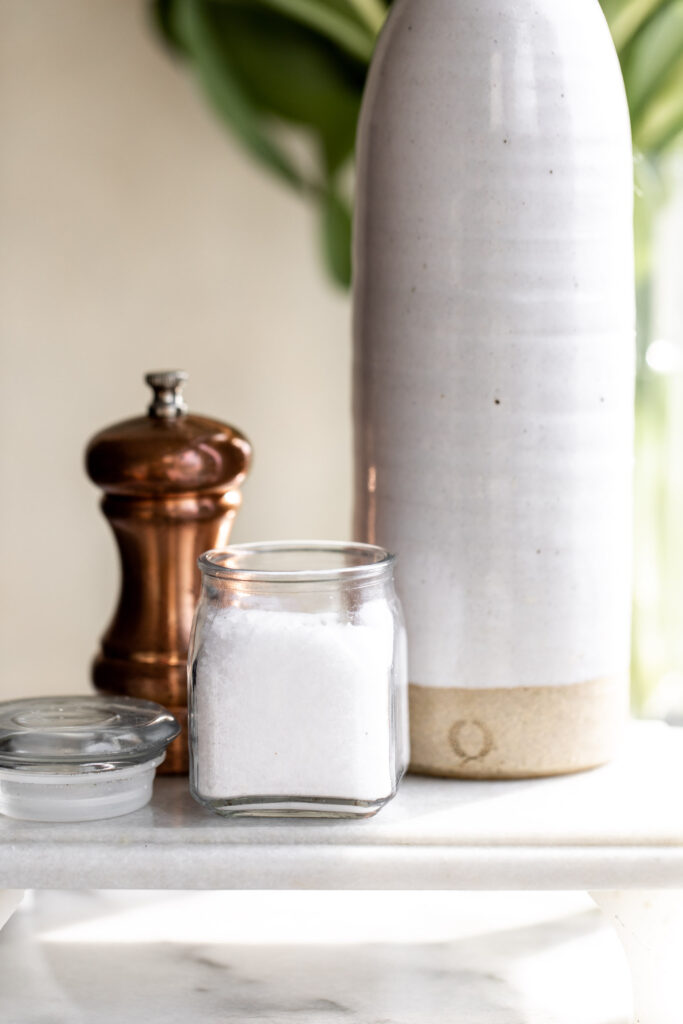
Oils/ Butter
Extra-virgin olive oil
Always buy high quality olive oil, and always olive oil in a dark glass bottle.
Vegetable oil
It’s good for frying things so it’s good to keep a big bottle. Plus it’s a neutral-flavored oil so it can be used with any food that olive oil would overpower in flavor.
*Sesame oil
I make a lot of Asian food and therefore use a lot of sesame oil. It’s great in salad dressings, marinades, and stir-frys.
Unsalted butter
I always opt to buy unsalted so that I can control the salt levels in the food later on. European-style is my favorite; it has a higher fat content so a smaller amount goes further.
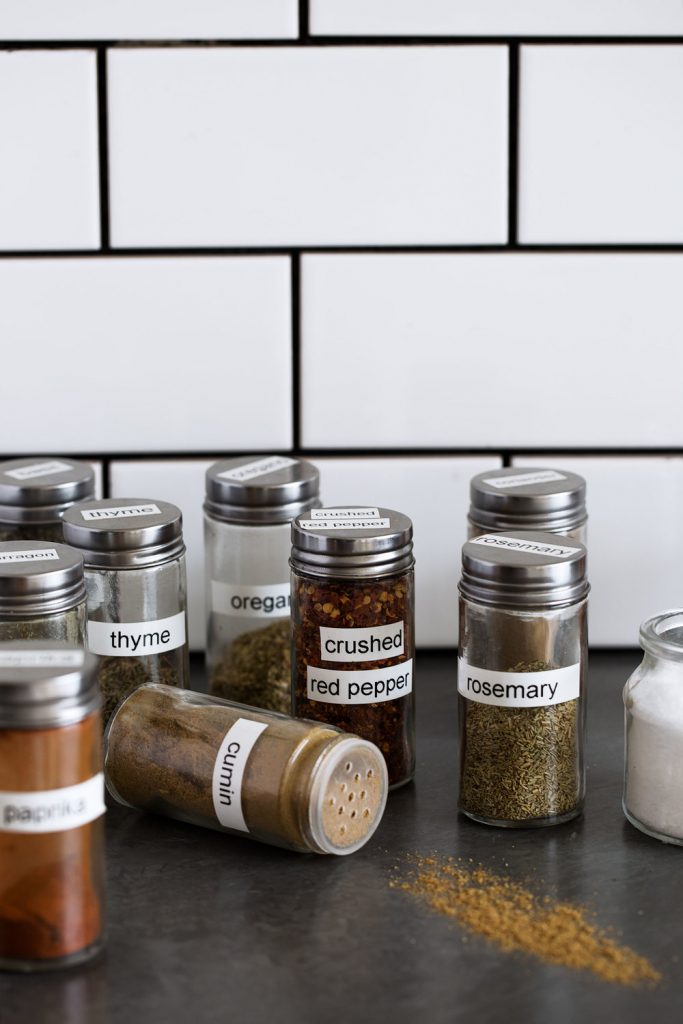
Spices
Salt
I always use coarse kosher salt! This would probably be my number one pantry recommendation because salt is an easy way to build flavor in food. I also keep table salt for baking and Jacobson flake salt for garnishing dishes.
Black pepper
Buy black peppercorns and grind it yourself directly into the food – it’s best fresh. Go for a coarse grind.
Vanilla extract
It’s made by soaking vanilla beans in alcohol and is used frequently in baking. I recommend buying a high quality version, it will last for a while and the cheaper vanilla extracts are obviously less expensive but they are also weaker in flavor.
While I definitely have more spices than I need in my pantry, for these purposes I narrowed down my list to the dried spices that I use most frequently:
Coriander
Fun fact: coriander is dried and ground seeds from cilantro plants.
Cinnamon
This versatile, warm spice with distinct earthy flavor and aromatics is great for baking.
Cumin
This earthy, warm spice with mellow flavor is used a lot in Mexican, Middle Eastern and Indian cooking.
Thyme
While I love fresh thyme, I kill a lot of my plants so dried thyme is nice to have on hand. It’s known for it’s light woodsy flavor.
Rosemary
With scents of lemon and pine, dried rosemary is used in French and Mediterranean cooking. I love combining it with olive oil and creating a rub for meat.
*Turmeric
This spice is a major component in curry powder and other curry dishes. It can be overpowering (and has a tendency to dye things yellow) but it is also known for anti-inflammatory properties. The deeper the color of this spice, the higher the quality.
Tarragon
This dried spice pairs well with fish and seafood dishes.
Crushed red pepper
If you like spice this is a must have – it’s a good way to add heat to the top of pizza or in sauces without having to buy and chop peppers.
Cayenne
Included in many hot sauces, it’s made from the very spicy chili pepper adds fiery heat to dishes. A little goes a long way.
*Ground Ginger
This fragrant spice can be used in place of grated ginger in a pinch and is used in many Asian cuisines to build flavor.
*Chili powder
This is actually a blend of many spices and is commonly used in Mexican cooking.
*Bay Leaves
These whole dried leaves can be added to soups and marinades for deeper flavor. One leaf can add a whole lot of flavor.
*Curry powder
This is actually a spice blend of lots of different spices but it can be used to build flavor in dishes quickly. It’s used in lots of Indian dishes.
*Basil
Dried basil is a necessity for Italian cooking and comes in handy as an alternative if you don’t have fresh basil plants.
*Oregano
Another essential to Italian cooking, oregano is used on everything from pizza to Mediterranean dishes.
*Paprika
A deep red spice, it’s used to color dishes and add flavor. Look for Hungarian paprika for the best quality.

In the Fridge
Eggs
In America most eggs require refrigeration. I always keep a dozen pasture-raised eggs on hand for various uses – an easy morning scramble, a grain bowl topped with a poached or fried egg or baking.
*Almond milk
I use it for my morning smoothies or overnight oats.
Whole milk
I still love real dairy in my morning cappuccinos and can use it with a roux for a quick cream sauce for pastas.
Parmesan-Reggiano cheese
Shocking no one, Parmesan cheese is my favorite cheese to shred over pasta, popcorn, or just about anything else. Buy the real kind- in whole blocks/ chunks from Italy (not pre-shredded or grated).
Tomato paste
I only buy the kind that comes in a tube, the type in cans are wasteful when you typically only need a tablespoon or so.
Bacon
I always keep a pack of bacon on hand for breakfast or to add to dishes (think pasta carbonara) for an easy protein that lasts a long time.
*Kimchi
This fermented cabbage Korean condiment can be made at home or store-bought. I keep a jar of Napa cabbage kimchi in the fridge to add a lot of flavor and spice to dishes.
*Anchovy paste
While oil-packed anchovies are great, if you don’t use the whole can at once then you waste a lot of good product. I like using the type in the tube that is already mashed up to add to Caesar salads or anything else that needs an umami add.
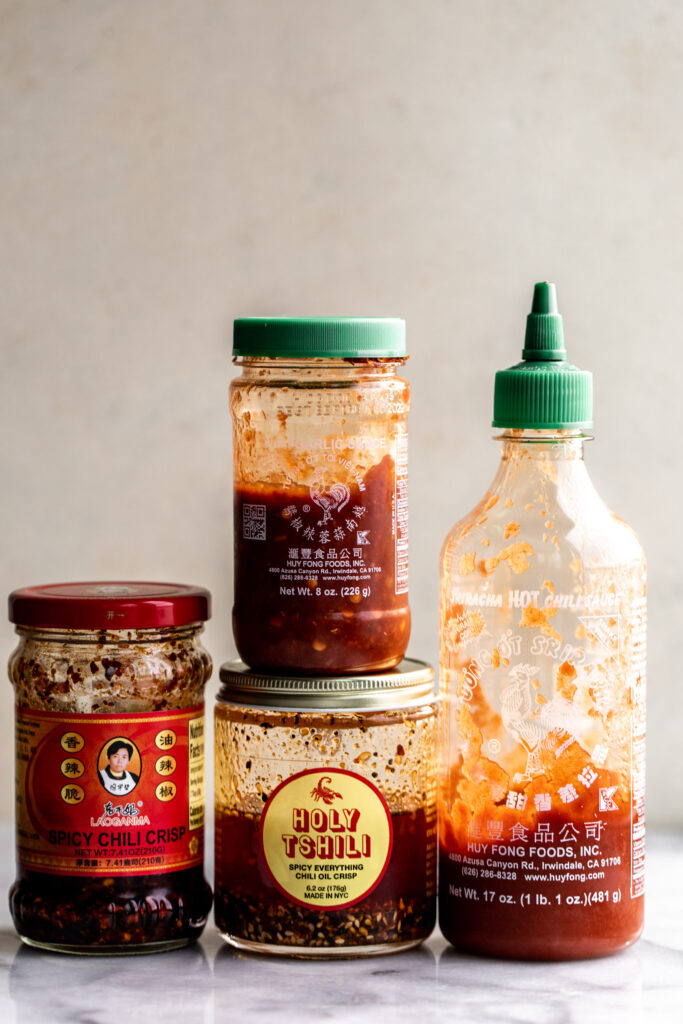

Condiments/ Sauces/ Vinegars
Dijon mustard
The perfect condiment to keep around for adding to sandwiches (I throw lots of leftover proteins like ham or chicken in between bread for a totally different meal) or to add depth to salad dressings.
*Whole grain mustard
A tangy mustard with deep flavor and crunchy texture from the seeds can accompany cheese or charcuterie or be used in sandwiches.
Soy sauce
It adds that extra oomph to lots of dishes.
Red wine vinegar
This is the most popular vinegar, made from fermented red wine and adds a balanced acid to dishes.
*Rice wine vinegar
Made from fermented rice wine, this vinegar is sweeter and less acidic and harsh than other wine vinegars.
*Balsamic vinegar
The only vinegar not made from fermented alcohol, balsamic traditionally comes from Italy and is a concentrated with a mellow tartness.
White vinegar
While this can be very useful for pickling, I use this most for cleaning purposes. White vinegar and kosher salt make a great polish for copper products.
*Apple cider vinegar
Provides a subtle tartness and reportedly has a variety health benefits like easing symptoms of acid reflux.
Mayonnaise
Instead of making my own, I often use mayonnaise as a base for sauces or aioli’s since it’s already stabilized.
Honey
A natural sweetener, I like to choose a locally sourced honey, known to help with seasonal allergies as well. Make sure what you are buying is soley honey and has no corn syrup added.
Sriracha
Let’s be real, this garlic chili paste has become everyone’s staple condiment.
*Ketchup
A very American condiment, I mainly use ketchup for on burgers and dipping fries.
*Gochujang paste
A funky, fermented sweet and savory Korean chili paste is a great substitute for Sriracha or sauce for chicken wings.
*Sambal Oleak
A chili paste with vinegar that I personally prefer over Sriracha.
*Maple syrup
Another natural sweetener, I am picky and go for high-quality Vermont maple syrup.
*Fish sauce
Fish sauce is very funky and a little can go a long way. It adds a lot of flavor to marinades and meals.

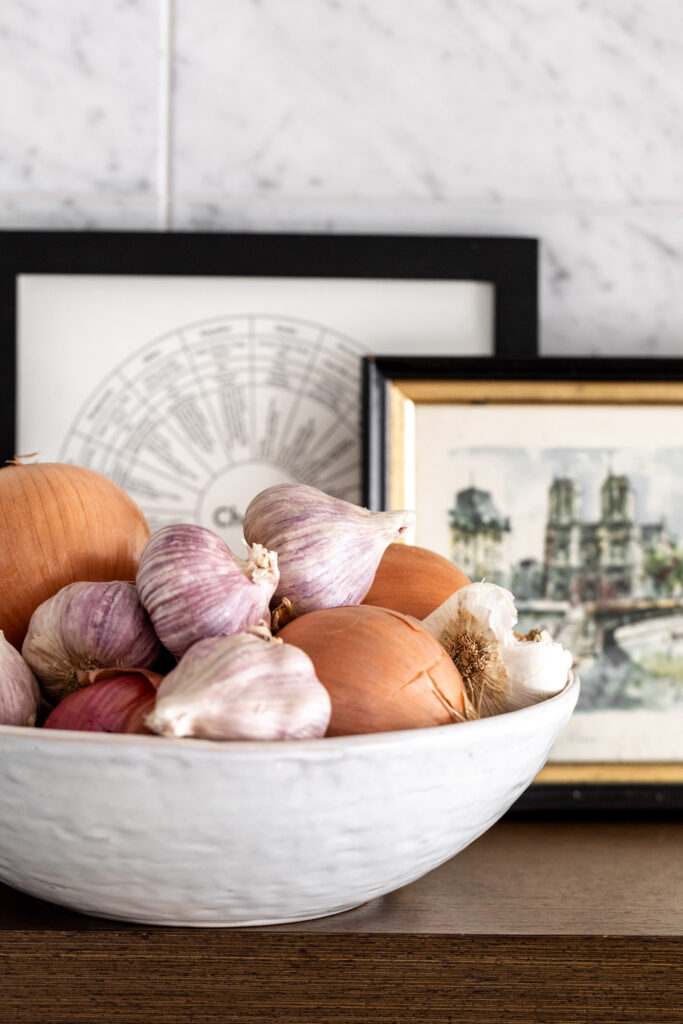
In the Pantry
Flour
As long as you don’t have a gluten allergy, always keep all-purpose flour stocked.
Sugar
I keep both granulated sugar (white sugar) and brown sugar stocked in airtight containers.
Rice
I usually keep white rice, jasmine rice and basmati rice on hand.
Quinoa
It can be cooked in the beginning of the week and divided out for meal prep lunches.
Lentils
I keep a bag of green lentils in my pantry year-round. Lentils make a great side served alongside salmon or roast chicken or added to salad or soup for a more protein-packed meal.
Dried pasta
If all else fails, I clean out the fridge and add it to a bowl of pasta.
Beans
Canned beans are cheap and can be kept in the pantry for a long time.
- Canellini beans – white beans that are great in soups.
- Black beans – heat up and serve with chicken, pork or grain bowls.
- Chickpeas – so much protein! Add to a grain bowl or make a hummus.
Breadcrumbs
I keep both plain breadcrumbs and panko breadcrumbs in my cabinet.
Canned whole tomatoes
It doesn’t hurt to keep a can in the pantry since it has a long shelf life. Canned tomatoes can be used for a quick pasta sauce or simmered into a soup.

Fresh Produce
Cilantro & flat-leaf parsley
I keep them stored in glasses of water in the refrigerator so they last longer.
Green onions
I go through at least a bunch a week.
Onions
I always have both yellow and red onions on hand. The best thing is that they last a long time so you can keep a few around with no rush.
Garlic
While whole heads of garlic are best, if you are cooking in large quantities or are lazy then you can buy pre-peeled garlic cloves in bags at places like Trader Joe’s or Bristol Farms. I usually keep both around.
Shallots
Shallots have a mild onion flavor and I like to keep them on hand since they last a long time.
Lemons and limes
They add an automatic brightness to dishes and last over a week.
*Tomatoes
I usually buy Roma or cherry tomatoes, and of course Heirloom if they are in season. They can be chopped up and added to salads, made into a quick pan sauce for pastas by sautéing them with onions and garlic or used for pico de gallo to accompany guac.
*Avocados
The drawback to avocados is that they don’t have a long shelf life, but they have so many uses.
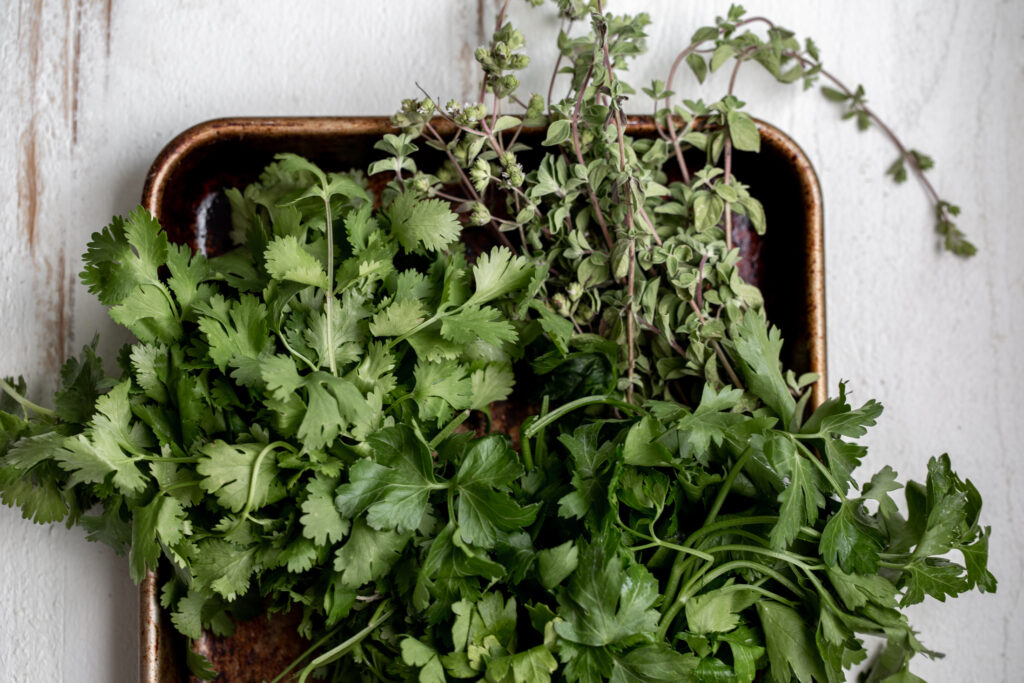

)
)
)
This is so helpful! No more analysis paralysis at the grocery store, thanks Kylie! Conservation times are good to know too.
So glad this is helpful!
Great article! I try to keep most of these things in my pantry but will definitely restock after reading this!